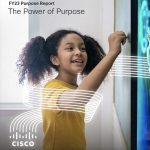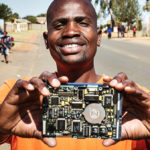Yesterday, Cisco and Junior Achievement of Northern California hosted Cisco’s inaugural Social Innovation Challenge on our San Jose campus. Fifty high school students from nearby Independence High School and Sequoia High School worked together in small groups to create and pitch ways to connect the unconnected.
I watched as excited students presented ideas to improve the patient/physician relationship and make the experience at the San Francisco 49er’s new stadium easier for fans. Their collaboration led them to brainstorm creative solutions that use technology in new and unanticipated ways. The winning team, “Epidemask,” pitched the concept of a blue-chip enabled gel facemask that prevents the spread of viruses while also communicating to authorities which regions need specific vaccinations.

It’s always fun to see students pour their energy into something like this. At the Social Innovation Challenge, we get the chance to watch kids organize new ideas and stand up in front of a panel of judges in a competitive environment. This format is great because it teaches them what the social problems are and how they can use technology and connections to solve them.
As more people, processes, data, and things connect in the age of the Internet of Everything, the demand for science, technology, engineering, and math (STEM) professionals will continue to grow. Students need the tools and the knowledge to find careers in STEM, and the Social Innovation Challenge is the perfect opportunity to expose students to these skills and to bona fide STEM professionals. I believe that kids have strong ideas to contribute, and providing the right environment around them brings that out. The 7 teams that presented shared innovative ideas that not only incorporated the Internet of Everything, but were social-benefit conscious, from the environment to education.
Cisco is a founding partner of US2020, an initiative that connects STEM professionals with girls, under-represented minorities and low-income students from kindergarten through college. Events like the Social Innovation Challenge give employees the motivation to volunteer, step back from behind their computers, and share in the excitement of the students. The enthusiasm of the students energizes employees to teach kids and inspire them to pursue careers in STEM.

I was honored to serve as a judge at yesterday’s event and hope that many more employees at Cisco and other technology companies will volunteer their time to teach students about the Internet of Everything and how they can use technology to create social change.
Read about our other STEM mentoring events this week:
Learn more about Cisco’s commitment to STEM education and careers.


CONNECT WITH US